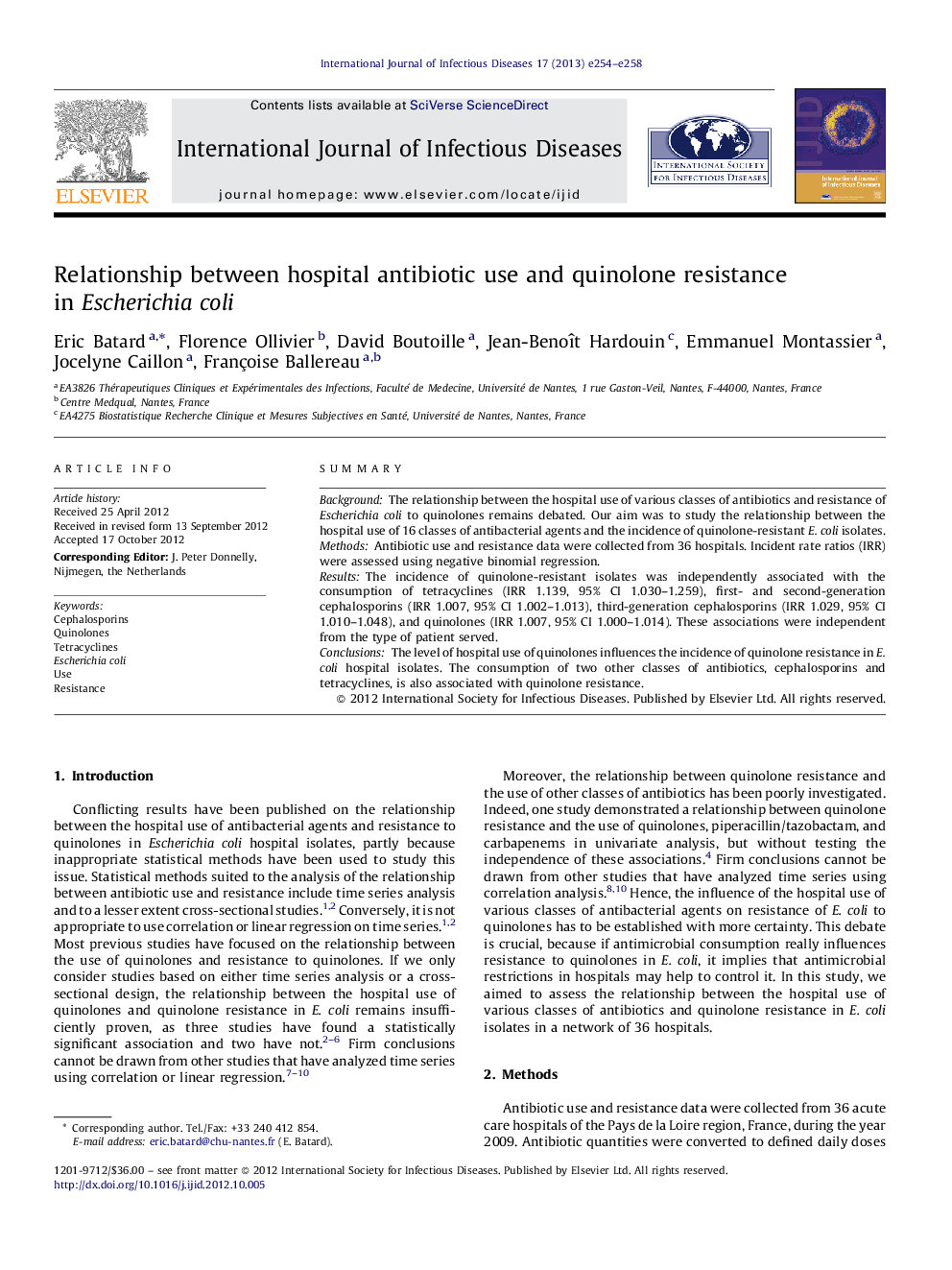| کد مقاله | کد نشریه | سال انتشار | مقاله انگلیسی | نسخه تمام متن |
|---|---|---|---|---|
| 3363094 | 1592087 | 2013 | 5 صفحه PDF | دانلود رایگان |

SummaryBackgroundThe relationship between the hospital use of various classes of antibiotics and resistance of Escherichia coli to quinolones remains debated. Our aim was to study the relationship between the hospital use of 16 classes of antibacterial agents and the incidence of quinolone-resistant E. coli isolates.MethodsAntibiotic use and resistance data were collected from 36 hospitals. Incident rate ratios (IRR) were assessed using negative binomial regression.ResultsThe incidence of quinolone-resistant isolates was independently associated with the consumption of tetracyclines (IRR 1.139, 95% CI 1.030–1.259), first- and second-generation cephalosporins (IRR 1.007, 95% CI 1.002–1.013), third-generation cephalosporins (IRR 1.029, 95% CI 1.010–1.048), and quinolones (IRR 1.007, 95% CI 1.000–1.014). These associations were independent from the type of patient served.ConclusionsThe level of hospital use of quinolones influences the incidence of quinolone resistance in E. coli hospital isolates. The consumption of two other classes of antibiotics, cephalosporins and tetracyclines, is also associated with quinolone resistance.
Journal: International Journal of Infectious Diseases - Volume 17, Issue 4, April 2013, Pages e254–e258